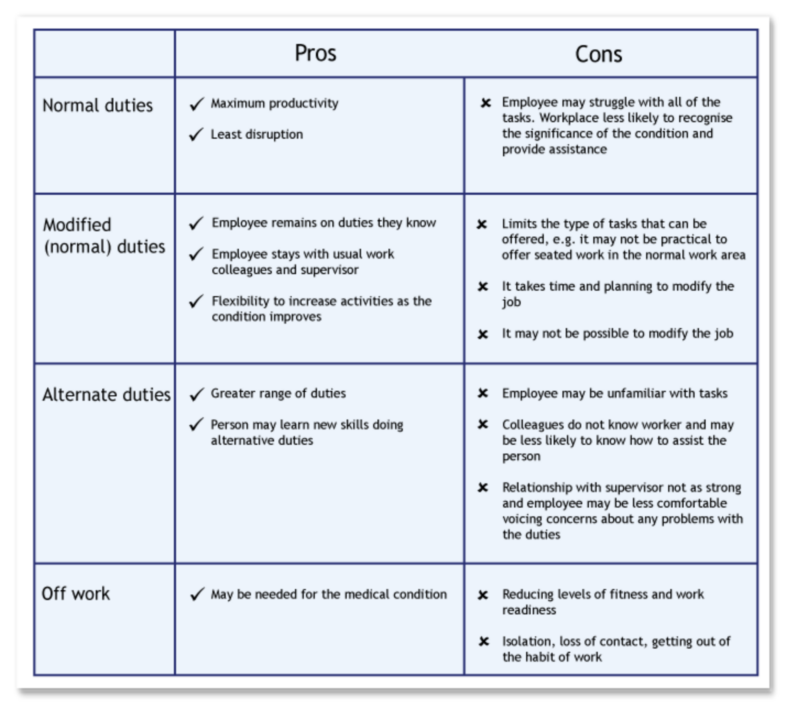|
The traditional approach to coordinating return to work is:
| 1. | Ask the treating doctor to identify restrictions |
| 2. | Identify jobs that match those restrictions |
| 3. | Develop a return to work program based on identified duties and send the plan to the doctor and employee for sign off |
This approach misses the valuable opportunity of engaging the employee and the supervisor in a partnership to achieve return to work.
Research indicates return to work success is more dependent on workplace relationships than on the medical condition.
A more enlightened method is to ask the employee and the supervisor to work together and identify appropriate duties.
These duties will need to be signed off by the doctor.
Getting to and from work may be an issue. In the early stages assistance with transport can make a big difference. Generally it works to provide short term assistance; longer periods of assistance are difficult to maintain. Co-workers are an option. If the drive is long, encourage the person to take a break mid way. |
To assist the partnership, provide broad parameters:
Return to work in the person's normal work area is preferable.
| • | Continue as many of the person's normal work tasks as are appropriate. |
| • | Be flexible and care for the employee. This allows them to voice concerns, e.g. if they are too sore to continue a particular activity. This makes it more likely the return to work will go smoothly. |
| • | Expert input e.g. a site visit by an Occupational Physician can help modify the way a job is done. |
| • | Communication with co-workers will increase the support the employee is given. |
The best practice |
|||||||||||||||
Map out a return to usual hours and normal duties over an agreed time frame. Be flexible if the condition does not improve as expected. Defining return to normal hours and usual duties against a timeline sets an objective for all parties to work towards. Against this progress can be monitored. If the employee is unhappy with the duties encourage their input. How else can they contribute? What other tasks do they consider possible? Can their usual job be modified? A hierarchy of return to work duties exists for good reason. The following table describes the pros and cons of each. |

![]() Next Step:
Next Step:
Deciding on return to work duties: